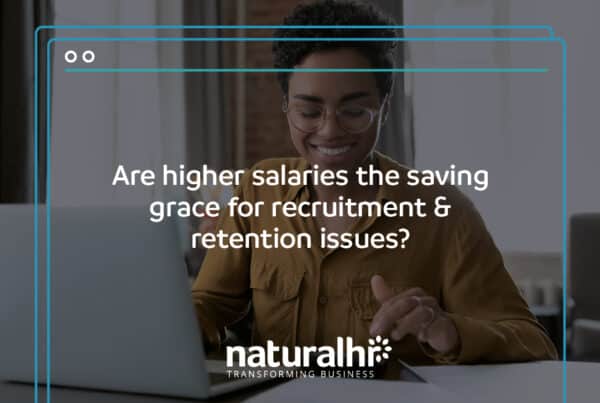
Last updated 06/09/21
Employee relations is a multifaceted yet straightforward concept. Many of the people who come to us asking what this term means often realise that it’s something they’ve been doing all along. They can then optimise their practices for even more success.
Employee Relations Defined
Employee Relations (ER) refers to a company’s structure and how they manage the rapport between leadership and staff. The goal of employee relations is to build and maintain positive relationships for a better working environment, reduced churn and increased productivity. Your staff should look forward to starting their working day, and positive employee relations are essential to creating that feeling.
Are Employee Relations the same as HR?
We know what you’re thinking; Employee Relations sound very much like Human Resources (HR). That’s because the primary focus within an HR department is to prevent and resolve any conflicts between employees, management and staff. Employee Relations is not the same as HR, but it does fall under the same umbrella. This is why many HR teams are already operating within Employee Relations without knowing it.
What are the 7 pillars of Employee Relations?
Effective employee relations relies upon a few key principles::
1) Show gratitude: Positive performance should be celebrated, even for something as small as a team member completing a task on time. Saying ‘please’ and ‘thank you’ are also simple ways to make your staff feel valued and respected.
2) Communicate openly: Employees should feel as though they can be open and honest with their managers and higher-level teams. Likewise, employers, managers and HR should elicit transparency in everything they do.
3) Invest in development: This applies to continual professional development but also refers to outside of work. Employees are more productive when they are happy at home, and there are ways you can support them in this. From offering free, confidential private therapy to paying their gym membership or encouraging them to pursue side projects, knowing that an employer cares for their staff increases loyalty.
4) Provide consistent feedback: One-to-ones are a perfect opportunity to offer performance feedback and advice on how employees can improve their performance. But it is also space for staff to provide feedback to management on how they could be better supported. However, for these meetings to work, they need to be consistent; whether it’s once a week or once a month, these meetings must be upheld.
5) Trust your team: Employees need to feel that management trusts them, and vice versa. An employee that doesn’t feel trusted also doesn’t feel valued or respected. That will be detrimental to performance, and will increase staff turnover.
6) Build a shared vision: Employees need to understand the part they play in the company’s success, and they need to have that role acknowledged and rewarded. Those that do will be happier, more engaged, more motivated, and more likely to stay for the long term.
7) Don’t play favourites: Treating employees differently according to personal feelings is poor practice. It will foster resentment and damage company culture.
Common Employee Relations issues
There are some exceedingly enjoyable aspects of Employee Relations, like those mentioned above. However, an essential arm of ER is to manage and resolve any issues that arise. It’s necessary to respect everyone, not take sides and work with all parties to find the best solution possible. Some examples of problems you’re likely to come across include:
1) Disputes management: Work environments are tricky things; you put people together who may have absolutely nothing in common and expect them to work together day in, day out. There will always be occasions when employees don’t get on with their colleagues or even their managers. When disagreements turn into disputes, action must be taken swiftly to resolve the issue.
2) Workplace accidents: The last thing you or the company owner wants is to address an accident that took place on work premises. Part of Employee Relations involves regularly reviewing workplace safety processes and ensuring that all employees understand any updates. In the unfortunate event of an accident on work premises, it’s essential to follow safety guidelines and remember that you’re working with a person who just got hurt. Empathy is vital here.
3) Timekeeping and attendance issues: You will undoubtedly come across a consistently late employee, regularly absent from work or whose productivity has dropped. The aim here is to understand the cause behind the issue, and open communication is key. If you can encourage your employee to be honest about the reasons for the shift in behaviour, you can work together to create a solution. Perhaps the cause is something going on at home; although it’s not exactly a ‘work issue’, it is having an impact, so understanding what the company can do to support them is vital to helping that employee feel valued, appreciated and more willing to try harder to resolve their timekeeping, attendance or performance problems.
Other examples of poor employee relations include:
- Showing disrespect when speaking to other members of the team, customers, or clients.
- Gossiping about other staff members, or generally getting involved in or fuelling “workplace politics”.
- Misusing company internet.
- Having poor presentation or hygiene.
- Violating safety rules.
Employee relations can be tricky to navigate at times but extremely rewarding when you get it right. Whether you’ve been operating within ER without knowing it or are just dipping your toes, keep your employees front and centre at all times, and you won’t go wrong.
Our knowledge of how vital employee relations is has helped us shape how we make our HR and payroll software. Features such as letting an employee clearly keep track of their staff benefits and tools to help employees get to know each other better are just some features that assist in creating a happier workplace.






